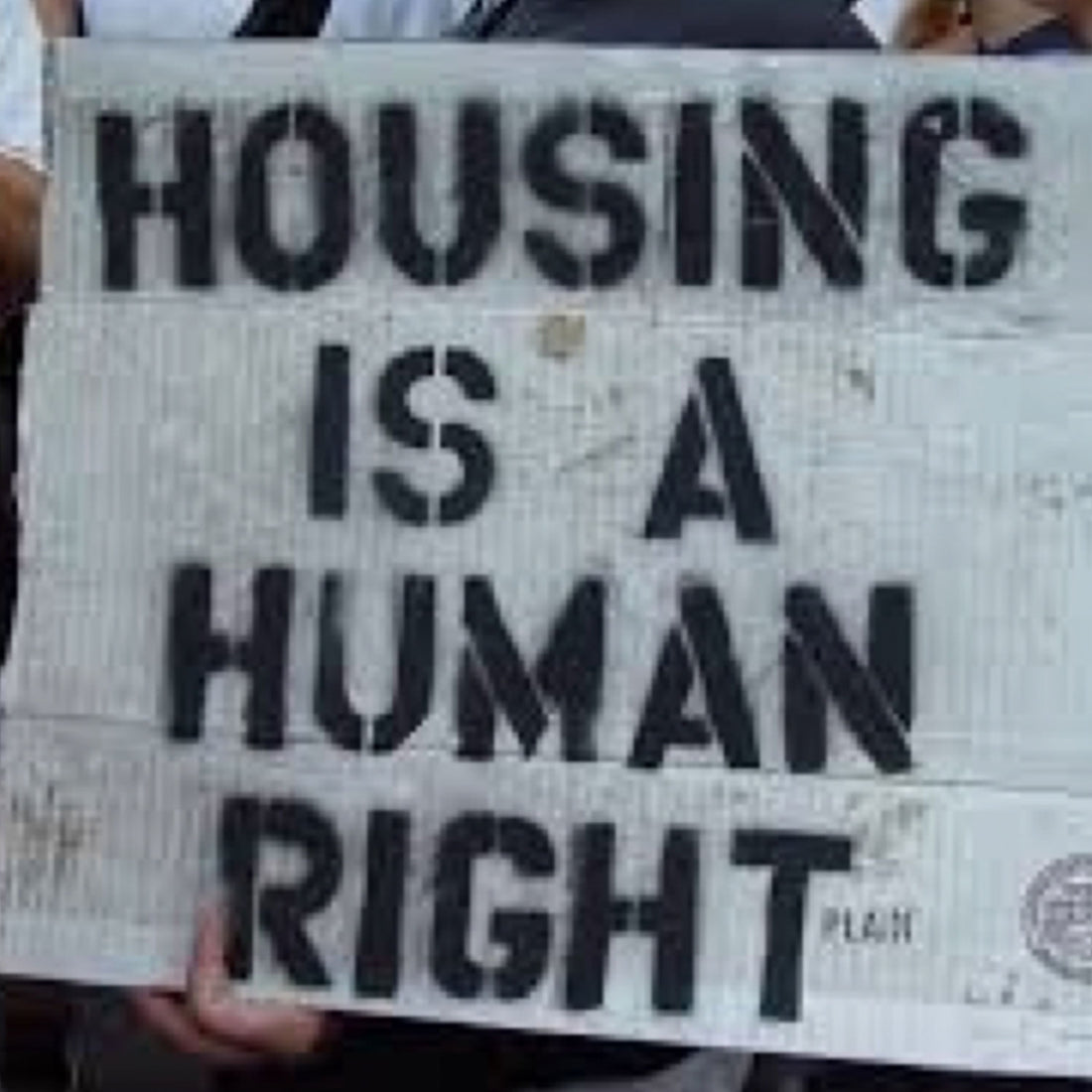
Housing and Mobility - Charleston SCEIRC Report
Team SightseeShare
On June 9th, 2020, the City of Charleston created the Special Commission on Equity, Inclusion, and Racial Conciliation "focused on the creation of measurable outcomes, promotion of greater accountability, and coordination of community wide efforts to achieve racial equity in our community."
In August, 2021, the SCEIRC released its recommendations. The complete, official document can be found here. In the interest of public consumption, we have translated the hard-to-read tables embedded in the report into bullet-pointed lists.
Each of the following areas of SCEIRC focus are outlined in separate posts:
- Criminal Justice Reform
- Economic Empowerment
- Health Disparities and Environmental Justice
- History and Culture
- Housing and Mobility
- Internal Review
- Youth and Education
This post is dedicated to Housing and Mobility and contains the stated Long-term goals, Objectives, Strategies, and Actions from the report.
The report contains the following additional details for each Action: Performance Measures, Evaluation Tools, Lead Staff, Oversight, and Due Date. Those have been omitted here for brevity.
____
LONG-TERM GOAL: Create new funding sources to support affordable housing
OBJECTIVE: To identify and pursue additional funding sources to support the development of affordable housing, Heirs' properties, Transit and Mobility initiatives and other programs related to Racial Equity and Inclusion.
- Strategy: Developmental Impact Fee
- Actions:
- Infrastructure must be in place to support housing and sustain economic opportunity. Availability and capacity create a barrier to more affordable housing within the City of Charleston. Impact fees are payments required by local governments of new development (commercial or residential) for the purpose of providing new or expanded capital improvements and infrastructure that serve that development such as water and sewer facilities, stormwater transmission, retention, detention, flood control facilities, roads, streets, bridges, right of ways, traffic signals, parks, recreation, public facilities, revitalization, etc.
- By adopting an ordinance authorizing the imposition of developmental impact fees on commercial and/or residential development, it creates a steady and long-term source of funding to target capital improvement and infrastructure needs necessary to bridge the gap and reduce barriers to more affordable housing within the City of Charleston.
- Strategy: Advocate for State Approval of Commercial Linkage Fees for Affordable Housing
- Actions:
- The purpose of a commercial linkage fee is to mitigate the impact of new market rate development on the demand for affordable housing. When a city or county adopts a commercial linkage fee, it must establish a reasonable relationship or connection “link” between the development project and the fee charged.
Studies which demonstrate this connection are called Nexus Studies. This commercial linkage fee nexus study quantifies the connection between the development of commercial hotel, retail/restaurants/services, and business park/light industrial projects and the demand for affordable housing units. The study also considers feasibility and other policy implications of implementing an impact fee. The nexus study uses a 5-step methodology to calculate the max legal fee charged on new commercial development for affordable housing.
The fees would go towards the City’s Affordable Housing Fund and can be used for the development of more affordable housing, Heirs’ property fund, anti-displacement policy, homeowner repair assistance program, potential application for economic hardship- demo by neglect and more.
NOTE: This concept can be introduced by local option legislative delegations at the state level to enable local government to adopt an ordinance to implement linkage fees on specific geographic areas such as the City of Charleston. With the dire need of more affordable housing and financial assistance in the City, this initiative would gain a lot of support.
LONG-TERM GOAL: Optimize Charleston Housing Authority's Repositioning Strategy of Public Housing utilizing Rental Assistance Demonstration and other allowed HUD programs.
OBJECTIVE: To maximize the number of affordable and mixed income housing units created by the City of Charleston Housing Authority utilizing the Rental Assistance Demonstration (RAD) and/or other HUD allowed program for the redevelopment of Public Housing units. Encourage and facilitate dialogue with the community of color related to the economic and educational impacts of desegregation while addressing their concerns of displacement and change.
- Strategy: Choice Neighborhood Implementation Grant
- Action: Pursue a Choice Neighborhood Implementation Grant for the revitalization of the Eastside and/or Westside neighborhoods in partnership with the Housing Authority of the City of Charleston (CHA).
- Strategy: Increased density on RAD sites
- Action: Receive commitment from CHA to increase density of each public housing development being repositioned under the Rental Assistance Demonstration (RAD) Program or other approved HUD Program.
- Strategy: Advocate for improved conversion schedule
- Action: Review CHA's RAD conversion schedule and forward recommendation to CHA to amend order of conversion that aligns with the level of urgency needed for rehabilitation and other environmental concerns (i.e. flooding).
- Strategy: Commit City funds to redevelopment of public housing
- Action: Commit to a certain amount from its Affordable Housing Fund for the redevelopment of public housing within its jurisdiction. For example, $X amount per unit up to $2 million per project. Identify parcels of land within the City of Charleston that can be used for the development of replacement housing.
- Strategy: Improve community engagement
- Action: Engage Black and Brown community leaders and stakeholders and address the issues facing the neighborhoods like crime, lack of recreational opportunities, lack of restaurants and healthy food availability, flooding and lack of economic opportunity. Tie these issues to the opportunities that will be created through the redevelopment of public housing through RAD.
- Strategy: Create Eastside Zoning Plan
- Action: Create a zoning plan for the Eastside optimizing the development opportunities and coordinate with CHA and the City of Charleston to rezone the public housing properties allowing for future RAD development.
- Strategy: Identify replacement housing for Public Housing Units
- Action: Identify existing or to be developed affordable housing properties that can be utilized as replacement housing for the Public Housing units.
LONG-TERM GOAL: Improve mobility infrastructure
OBJECTIVE: To prioritize efforts to improve mobility safety efforts in minority communities, thus increasing efforts towards improving quality of life in said communities. People of color in under resourced communities in the Charleston, SC area are disproportionately in danger of transportation related accidents resulting in death. Communities of color often suffer from neglected infrastructure, which negatively affects the quality of life of residents.
- Strategy: Neighborhood Sidewalk Expansion/ Improvement Project
- Action: Establish a Neighborhood Sidewalk Expansion/Improvement Project for the improvement and establishment of city-owned sidewalks in line with the Greenville, SC NSTEP program.
- Strategy: Data Collection
- Action: Collect and analyze more area-specific data to pinpoint the locations and neighborhoods which would benefit from increased street-scaping, lighting, and right of way in order to properly assess mobility needs across the city.
LONG-TERM GOAL: Ensure Lowcountry Lowline is equitable and inclusive
OBJECTIVE: The future Lowcountry Lowline exists within proximity of communities where people of color have played a significant role. Moreover, as seen in other cities, the introduction of significant public improvements has the potential to have negative impacts for communities of color. Diversity, equity, and inclusion practices should be implemented in both the Lowcountry Lowline project and within the nonprofit leading Lowline efforts, Friends of the Lowcountry Lowline (FLL).
- Strategy: Community Advisory Council
- Action: FLL should create a Community Advisory Council to provide voting or decision-making input as it relates to the design, operations, and programming of the Lowline Project.
- Strategy: Reduction of police activity along Lowline
- Action: Specific efforts should be taken to identify and avoid potential negative outcomes related to disproportionate police activity impacting people of color along the Lowline.
- Strategy: Matrix to review monetary decisions
- Action: A matrix should be developed to assess monetary decisions benefiting the Lowline that could negatively impact the Eastside neighborhood.
- Strategy: Support for Eastside Communities
- Action: Identify specific ways to benefit the Eastside Neighborhood utilizing CRB TIF funds.
- Strategy: MBE Participation
- Action: Ensure that there is at least 30% participation from qualified and diverse teams. Some of the following strategies could be used to reach this goal.
- A mentor-protégé model that would guide emerging businesses who are not yet eligible for the City of Charleston’s MBE certification.
- Small business set-asides
- Joint ventures
- Partner with the Eastside Community Development Corporation to utilize their social network to fulfill participation goals. Establishing a strong partnership would help increase their capacity to invest in development projects that could directly impact their community.
LONG-TERM GOAL: Name West Ashley Bike and Pedestrian Bridge
OBJECTIVE: To seek recommendations for the naming of the West Ashley Bike and Pedestrian Bridge, which would highlight, celebrate and educate residents to the accomplishments and historic significance of the work of a person of color who made a profound impact on the City of Charleston.
- Strategy: Public campaign for names
- Action: Conduct a public campaign to identify appropriate names for the Bridge, and should invite specific input from organizations such as the NAACP, the Avery Research Center, and the Association for the Study of African American Life and History (Charleston Chapter). Examples of possible honorees include: Modie Rischer; Leaders of the 1969 MUSC Hospital Strike including Bill Saunders and Louise Brown; Mary Mathews Just.
- Strategy: Approve name from those solicited
- Action: Select a name from those solicited and approve the renaming of the Bridge.
LONG-TERM GOAL: Improve Mixed Use Workforce Housing/ Fee in lieu
OBJECTIVE: To foster more affordable housing in gentrifying neighborhoods and to prevent displacement, the MU/WH zoning fee in lieu should be increased. The MU/WH zoning has resulted in every developer but one choosing to pay the Fee-In-Lieu rather than develop 20% of their units as affordable. This has resulted in a reduction in the total number of affordable units that could have potentially been built as a result of MU/WH rezonings. Should developers continue to choose the Fee-In-Lieu option, additional funding garnered could also facilitate units serving residents at lower AMI in various parts of the City.
- Strategy: Increase Fee In Lieu
- Action: Increase the Fee-In-Lieu connected to the Mixed-Use/Workforce Housing (MU/WF) zoning district to at least 50% above current levels.
- Strategy: Offset impact of constructing workforce units
- Action: Provide a menu of options for the developer used to offset the impact of constructing workforce units. Ideally, the developer could choose one of the following:
- Extend affordable housing concierge services to those agreeing to provide 20% of workforce units in place.
- Eliminate or significantly reduce off-street parking requirements for not only the affordable units but the market-rate units as well. c. Other methods of expediting land entitlement for those building units in place.
- Strategy: Determine if units could be approved to accept Housing Authority vouchers
- Action: Collaborate with City of Charleston Housing Authority on ways to utilize tenant based or project based section 8 vouchers to improve the affordability of units created in the Mixed- Use/Workforce Housing (MU/WF) zoning district.
LONG-TERM GOAL: Provide support for owners of heirs property and help families build generational wealth.
OBJECTIVE: To help families who own Heirs property clear title, repair their homes and navigate the legal system and City of Charleston BAR in an effort to maximize their property values and build generational wealth.
Many families do not qualify for the current programs available through organizations like the Center for Heirs Property because the family members are either not all identified or not in agreement. The element of trust should be emphasized in any proposal to litigate and clear title to Heirs Property because of the abuse suffered due to the disadvantageous position of minority property owners. Legal devises have been used in the past to divest them of their interest because of the lack of ability to defend themselves. It is important to understand that once they start down the road of litigation to clear title and the Heirs are identified, the Heirs will either continue to own the property or it will be sold outside of the family. Any heir, now Tenants in Common, has the right to the value of their interest. It becomes Family vs. Money. Any outreach to the possible Heirs should involve some historical context of era in which the deceased property owner lived and the difficulties in procuring and keeping the property to pass on the subsequent generations. There are often various impediments to maintaining property ownership, i.e.; borrowing money at usurious loan rates, fraud, putting the house up as collateral or as an asset for a criminal bond, were all devises used to divest property owners.
Application for Economic Hardship Claims under historic preservation ordinances. Historic preservation ordinances in effect around the country often include a process for administrative relief from preservation restriction in situations of economic hardship. Under typical economic hardship procedures, an applicant can apply for a certificate of economic hardship after a preservation commission has denied a request to alter or demolish a historic property protected under the ordinance. The exact meaning of the term economic hardship depends on how the standard is defined in the ordinance. Under many ordinances it can be defined as consistent with the legal standard for an unconstitutional regulatory taking, which requires a property owner to establish they have been denied all reasonable beneficial use or return on the property as a result of the denial of a permit for alteration or demo.
- Strategy: Create new partnerships
- Action: Identify and negotiate partnerships with community programs like Center for Heirs Property Preservation, Charleston Pro Bono and the Charleston County BAR which already supports these 501(c)(3) programs.
- Strategy: Prioritize hiring of attorneys of color
- Action: Encourage the City to include more Attorneys of color in all programs related to Heirs properties.
- Strategy: Maintain database of dilapidated and endangered homes
- Action: Identify and maintain the existing Database of all dilapidated and endangered homes located on the peninsula.
- Strategy: Provide information
- Action: Coordinate with Historic Charleston Foundation, Preservation Society and the BAR to provide information and assistance to homeowners that qualify for Demolition by Neglect waivers and to allow homeowners to qualify for waivers on renovation requirements if they have owned their home more than 25 years.
- Strategy: Identify new funding sources
- Action: Identify additional funding sources to pay for the legal, site studies and other costs related to clearing title and renovations.
LONG-TERM GOAL: Create a Community Land Bank
OBJECTIVE: To address the patterns of deterioration in dilapidated homes and buildings and to provide a program for revitalization while creating more affordable housing in the City of Charleston.
- Strategy: Create a Land Bank
- Actions: Land banks are created by local jurisdictions – usually as a public entity but occasionally as an independent nonprofit –to hold abandoned, vacant, and tax-delinquent properties for future development. Not only does this provide local jurisdictions with land for future development, it also reduces the number of “problem properties” in a community by creating a process for management and disposition. Land banks are a powerful tool for jurisdictions faced with problems from both the hot and cold ends of the housing market spectrum. In hot markets, land banks allow jurisdictions to make development decisions with less concern about the cost of land because they already have a portfolio of parcels ready for development. In cold markets, land banks reduce blight by acquiring abandoned and/or delinquent properties, clearing title, and then putting the properties back into productive use consistent with community priorities.
This concept can be reintroduced by local option legislative delegations at the state level to enable local government to adopt an ordinance for community land banks. Both the Developer Impact Fee or Commercial Linkage Fee could fund this initiative and a program is developed specifically to address Heirs’ property, title clouds and demo by neglect needs. This is also a means for creating more affordable housing opportunities in the City of Charleston.
LONG-TERM GOAL: Establish a Fair Housing Assistance Program
OBJECTIVE: To establish a Fair Housing Assistance Program (FHAP) in the City of Charleston. While the City of Charleston has a Fair Housing Ordinance, it needs to be reviewed if it is substantially equivalent to the Federal Fair Housing Act. In addition, the City does not have an enforcement mechanism for bringing fair housing complaints. The process of establishing a FHAP would ensure substantially equivalency and an enforcement entity at the City.
The estimated timeline for recommendation implementation is 18-24 months and could be administered by the City’s Legal Department and/ or Housing and Community Development Department.
- Strategy: Determine substantial equivalency
- Action: Determine if the City of Charleston Fair Housing Ordinance is substantially equivalent to the Fair Housing Act.
- Strategy: Draft new ordinance
- Action: If necessary, draft changes to the Ordinance that would bring the City into substantial equivalency.
- Strategy: Determine capacity to become FHAP
- Action: Determine its capacity to become a FHAP according to the following:
- a. Review 24 C.F.R. part 115
- b. Where it fits organizationally within the City’s administration c. Staffing requirements and costs:
- i. HUD provides FHAP funding annually on a noncompetitive basis to state and local agencies that administer fair housing laws that provide rights and remedies that are substantially equivalent to those provided by the Fair Housing Act.
- Funding provided by HUD is not intended to cover 100 percent of the costs of the agencies’ operations, so local resources must be provided by the jurisdiction. Resources from the jurisdiction should include both funding and the legal resources necessary to pursue administrative and/or judicial enforcement.
- Through FHAP, HUD reimburses both interim and certified substantially equivalent state and local agencies in their fair housing enforcement efforts, consistent with congressional appropriations.
- Strategy: Approve FHAP recommendations
- Actions:
- Drafted ordinance and FHAP recommendations should be submitted to City Council for approval.
- Submit application to HUD for Substantial Equivalent Certification:
- There are two phases in determining whether an agency is substantially equivalent. In the first phase, the Assistant Secretary for Fair Housing and Equal Opportunity determines whether, "on its face," the state or local law provides rights, procedures, remedies and judicial review provisions that are substantially equivalent to the Fair Housing Act. If so, HUD offers the agency interim certification for up to three years. During the three years of interim certification, the agency builds its capacity to operate as a fully certified substantially equivalent agency.
- The City of Charleston may be certified as substantially equivalent after it applies for certification and HUD determines that the agency administers a law that provides substantive rights, procedures, remedies and judicial review provisions that are substantially equivalent to the Fair Housing Act.
- Strategy: Implement FHAP recommendations
- Actions:
- Requirements of the City of Charleston if Substantial Equivalent Certification is awarded:
- HUD will provide resources to the FHAP in the form of training, technical assistance and funding, the City of Charleston must demonstrate a commitment to thorough and professional complaint processing. This includes all phases of complaint processing, from accurate identification of issues at intake, through complete and sound investigations, to following through on administrative or judicial enforcement to ensure that victims of unlawful housing discrimination obtain full remedies and the public interest is served.
- The City must demonstrate that it can provide an investigative, judicial and administrative process according to the following: (See Attached Chart)
LONG-TERM GOAL: Enact Mandatory Inclusionary Zoning
OBJECTIVE: To increase the number of affordable homes in the City by requiring new developments to include a percentage of units that are restricted by income.
- Strategy: Advocate for state enabling legislation to allow jurisdictions to enact inclusionary zoning
- Action: The State of South Carolina prohibits cities from enacting mandatory inclusionary zoning. Since 2017, the City of Charleston has led an advocacy effort in support of legislation that would provide jurisdictions the option to enact inclusionary zoning. Thus far, state legislators have not been supportive of this bill. The City should continue to advocate for state enabling legislation that could pass at the state level.
- Strategy: Create and approve a mandatory inclusionary zoning ordinance
- Action: If state enabling legislation is adopted, an ordinance should be drafted with community input that would implement mandatory inclusionary zoning and approved by Council.
___
The report contains the following introduction before listing the recommendations:
The Housing and Mobility Subcommittee was tasked with identifying action steps to ensure a more equitable and inclusive City of Charleston in the areas of housing and mobility within 90 days. The subcommittee was asked to review the intersection of people’s ability to secure stable and affordable housing, proximity to economic hubs, and the ability to move between the two.
The Subcommittee was expected to work in partnership with the City of Charleston Traffic and Transportation Committee, Community Development Committee, Bike and Pedestrian Advisory Committee and Planning Commission as well as local, regional, and national organizations centered around affordable housing and transportation opportunities. The Subcommittee was charged with reviewing policy and recommending any changes it deemed necessary to ensure that impediments to fair housing choice are eliminated. The Subcommittee was asked to review applicable current policies, procedures, and legislation and to make recommendations it deemed necessary.
The Housing and Mobility Subcommittee began meeting bi-monthly in September and collectively identified areas of focus related to the purpose set forth by the City of Charleston. The resulting recommendations are the beginning, but certainly not the end, toward achieving a more inclusive community related to housing and mobility.
The Subcommittee realizes that our recommendations only scratch the surface of the work still to be done and we strongly recommend the City continue the work by making the Special Commission on Equity, Inclusion, and Racial Conciliation a permanent Commission. We also ask that the City provide resources to the City departments responsible for the implementation and oversight of the work moving forward.
It has been an honor to serve and the Housing and Mobility Subcommittee members look forward to continuing to support the City of Charleston in their efforts to become a more equitable and inclusive place to live for all of its citizens.
___
Hero image credit:
Screenshot from SCEIRC Housing & Mobility Section



